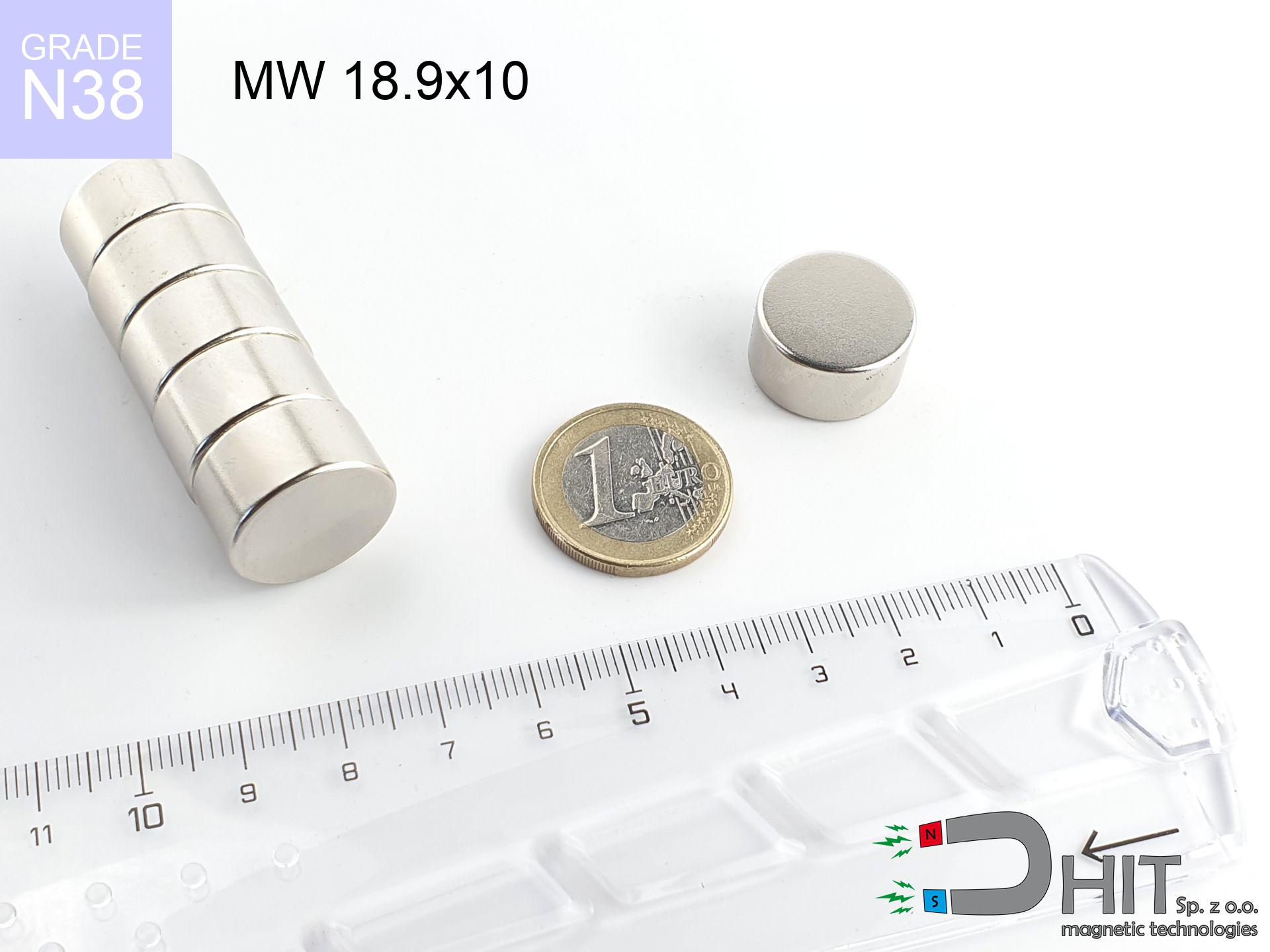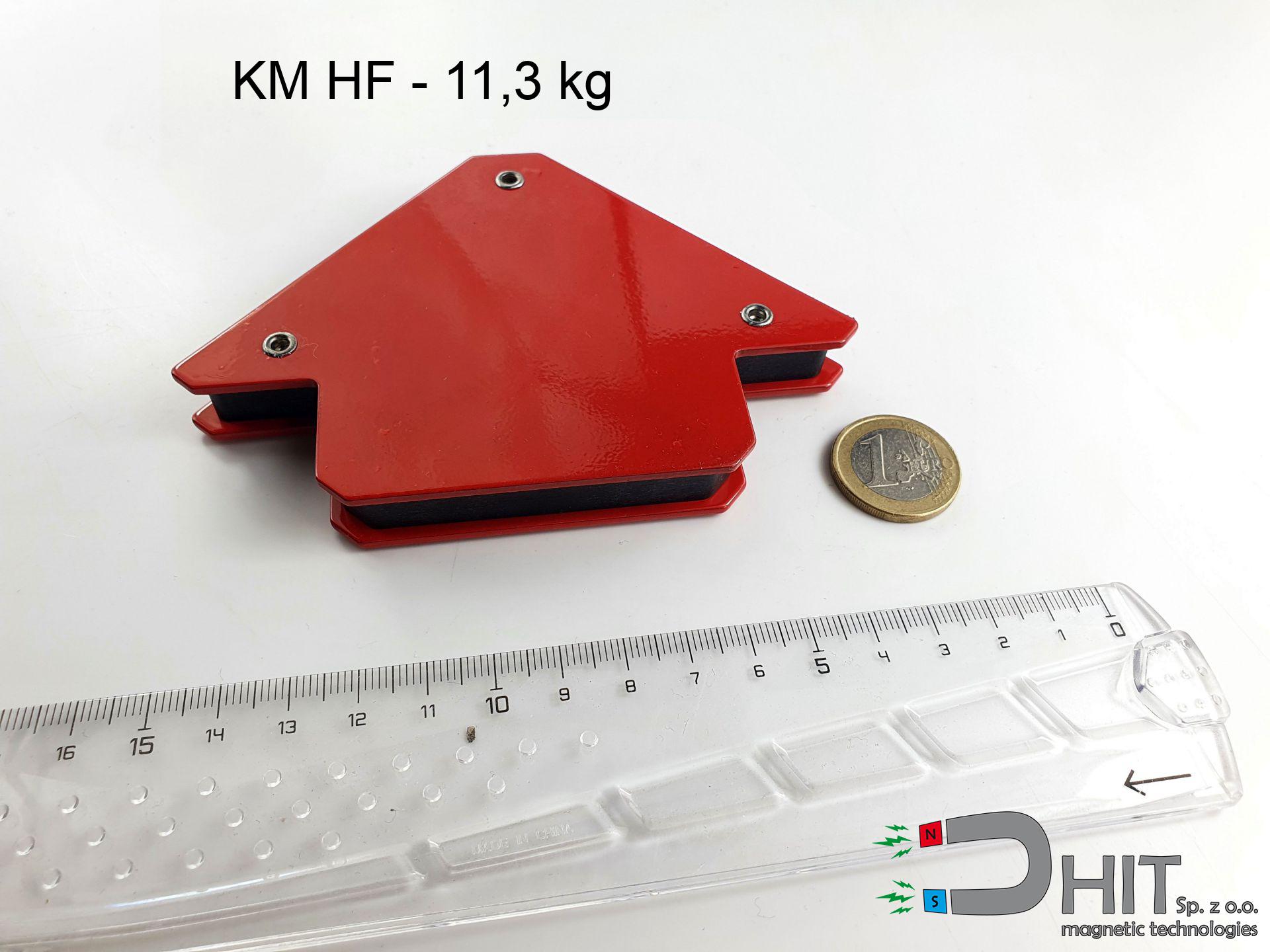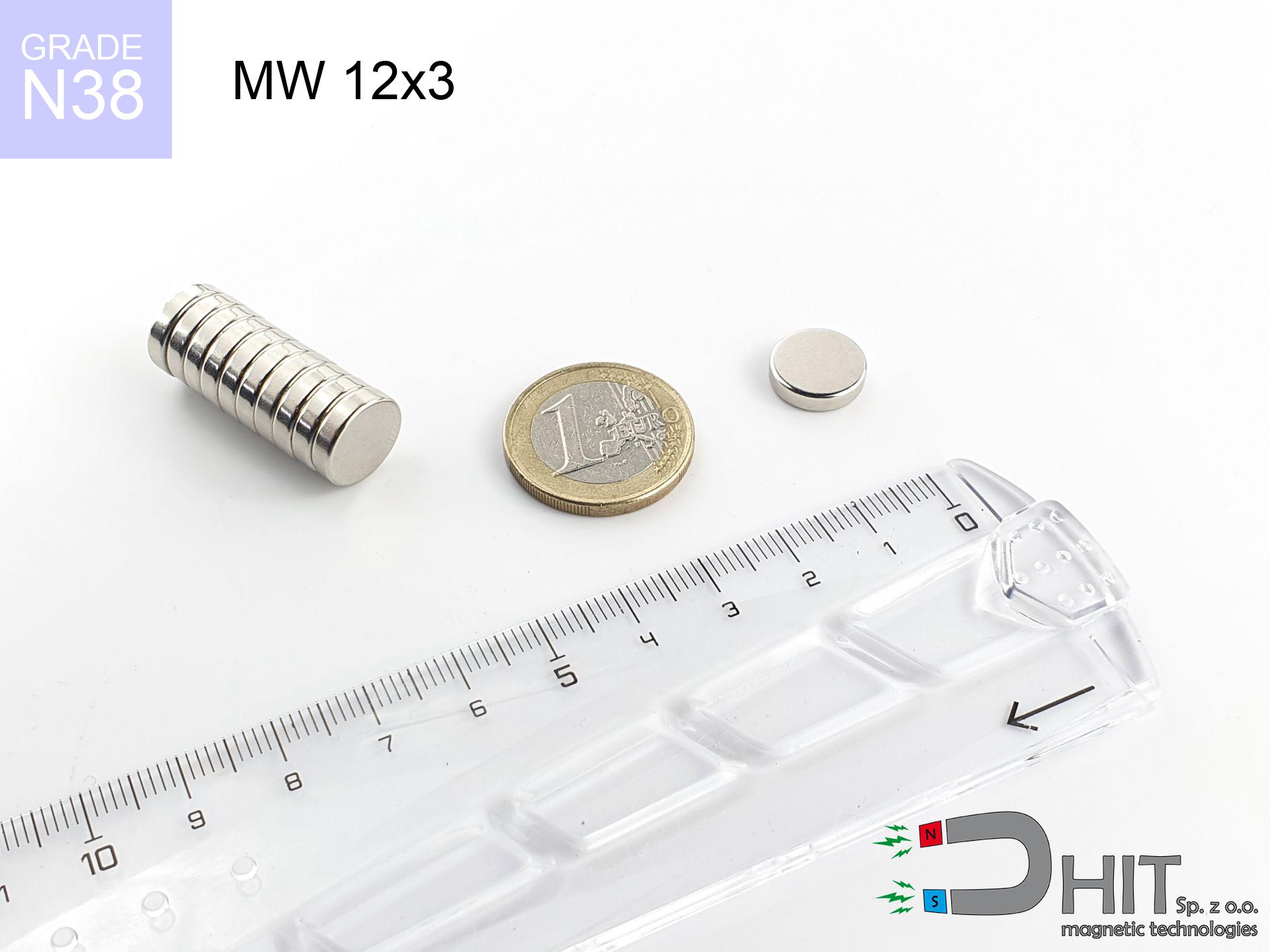UMH 16x5x32 [M4] / N38
magnetic holder with hook
catalog number 310424
GTIN: 5906301814535
diameter Ø
16
mm [±0,1 mm]
height
5
mm [±0,1 mm]
height with hook
32
mm [±0,1 mm]
magnetizing direction
↑ axial
capacity ~
7.50 kg / 73.55 N
max. temperature
≤ 80
°C
catalog number 310424
GTIN: 5906301814535
diameter Ø
16 mm [±0,1 mm]
height
5 mm [±0,1 mm]
height with hook
32 mm [±0,1 mm]
magnetizing direction
↑ axial
capacity ~
7.50 kg / 73.55 N
max. temperature
≤ 80 °C
4.88 ZŁ gross price (including VAT) / pcs +
3.97 ZŁ net price + 23% VAT / pcs
bulk discounts:
need more quantity?Want to bargain?
Give us a call tel: +48 22 499 98 98 or contact us via form on our website. You can check the mass as well as the appearance of neodymium magnet in our magnetic mass calculator power calculator
Orders placed by 2:00 PM will be shipped on the same business day.
Specification: magnetic holder with hook 16x5x32 [M4] / N38 ↑ axial
Magnetic properties of the material N38
Physical properties of sintered neodymium magnets Nd2Fe14B
Shopping tips
Advantages as well as disadvantages of neodymium magnets NdFeB.
Apart from immense power, neodymium magnets have the following advantages:
- They do not lose strength over time. After 10 years, their power decreases by only ~1% (theoretically),
- They protect against demagnetization caused by external magnetic field extremely well,
- By applying a shiny coating of nickel, gold, or silver, the element gains an aesthetic appearance,
- They possess very high magnetic induction on the surface of the magnet,
- Magnetic neodymium magnets are characterized by very high magnetic induction on the surface of the magnet and can operate (depending on the form) even at temperatures of 230°C or higher...
- Thanks to the flexibility in shaping or the ability to adapt to specific requirements – neodymium magnets can be produced in various forms and dimensions, which expands the range of their possible uses.
- Key role in the industry of new technologies – are utilized in computer drives, electric drive mechanisms, medical equipment or various technologically advanced devices.
Disadvantages of neodymium magnets:
- They are fragile when subjected to a powerful impact. If the magnets are exposed to impacts, we recommend using magnets in a protective case. The steel housing in the form of a holder protects the magnet from impacts, and at the same time increases its overall strength,
- Magnets lose their strength due to exposure to high temperatures. In most cases, when the temperature exceeds 80°C, these magnets experience permanent loss in strength (although it is worth noting that this is dependent on the form and size of the magnet). To avoid this problem, we offer special magnets marked with the [AH] symbol, which exhibit high temperature resistance. They can operate even at temperatures as high as 230°C or more,
- Magnets exposed to a humid environment can corrode. Therefore, when using them outdoors, we suggest using waterproof magnets made of rubber, plastic, or other moisture-resistant materials,
- The use of a cover - a magnetic holder is recommended due to the limited production capabilities of creating threads or complex shapes in the magnet
- Health risk to health from tiny fragments of magnets are risky, if swallowed, which is crucial in the context of children's health. Additionally, miniscule components of these products are able to complicate diagnosis in case of swallowing.
Handle Neodymium Magnets with Caution
Neodymium Magnets can attract to each other due to their immense internal force, causing the skin and other body parts to get pinched and resulting in significant swellings.
Magnets will attract each other within a distance of several to about 10 cm from each other. Remember not to put fingers between magnets or alternatively in their path when they attract. Depending on how massive the neodymium magnets are, they can lead to a cut or alternatively a fracture.
Neodymium magnets are the most powerful magnets ever invented. Their power can shock you.
Make sure to review all the information we have provided. This will help you avoid harm to your body and damage to the magnets.
The magnet is coated with nickel - be careful if you have an allergy.
Studies clearly indicate a small percentage of people who suffer from metal allergies such as nickel. An allergic reaction often manifests as skin redness and rash. If you have a nickel allergy, try wearing gloves or avoid direct contact with nickel-plated neodymium magnets.
It is essential to keep neodymium magnets away from youngest children.
Neodymium magnets are not toys. Do not allow children to play with them. In the case of swallowing multiple magnets simultaneously, they can attract to each other through the intestinal walls. In the worst case scenario, this can lead to death.
Neodymium magnets can become demagnetized at high temperatures.
Although magnets have demonstrated their effectiveness up to 80°C or 175°F, the temperature can vary depending on the type, shape, and intended use of the specific magnet.
Neodymium magnets should not be near people with pacemakers.
Neodymium magnets generate very strong magnetic fields that can interfere with the operation of a pacemaker. This happens because such devices have a function to deactivate them in a magnetic field.
Magnets made of neodymium are delicate and can easily crack and get damaged.
In the event of a collision between two neodymium magnets, it can result in them getting chipped. Despite being made of metal and coated with a shiny nickel plating, they are not as hard as steel. At the moment of collision between the magnets, small sharp metal pieces can be propelled in various directions at high speed. Eye protection is recommended.
Dust and powder from neodymium magnets are highly flammable.
Do not attempt to drill into neodymium magnets. Mechanical processing is also not recommended. Once crushed into fine powder or dust, this material becomes highly flammable.
Never bring neodymium magnets close to a phone and GPS.
Magnetic fields can interfere with compasses and magnetometers used in aviation and maritime navigation, as well as internal compasses of smartphones and GPS devices. There are neodymium magnets in every smartphone, for example, in the microphone and speakers.
Keep neodymium magnets away from the wallet, computer, and TV.
Magnetic fields generated by neodymium magnets can damage magnetic storage media such as floppy disks, credit cards, magnetic ID cards, cassette tapes, video tapes, or other similar devices. They can also damage televisions, VCRs, computer monitors, and CRT displays. Avoid placing neodymium magnets in close proximity to electronic devices.
So that know how powerful neodymium magnets are and why they are so dangerous, see the article - Dangerous strong neodymium magnets.

![UMH 16x5x32 [M4] / N38 UMH 16x5x32 [M4] / N38](https://cdn3.dhit.pl/graphics/products/umh-16x5x32-m4-lak.jpg)
![UMH 16x5x32 [M4] / N38 UMH 16x5x32 [M4] / N38](https://cdn3.dhit.pl/graphics/products/umh-16x5x32-m4-jof.jpg)





